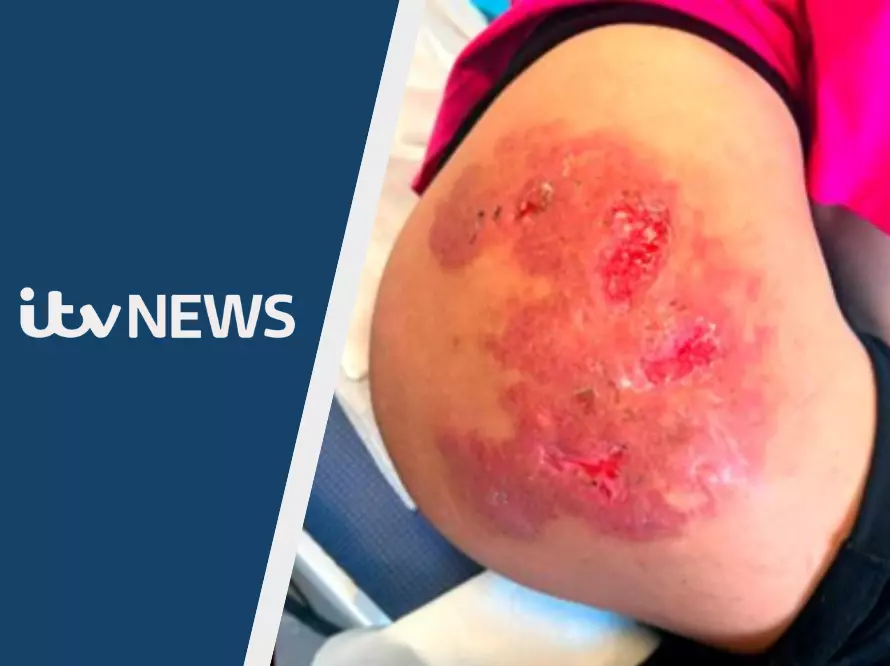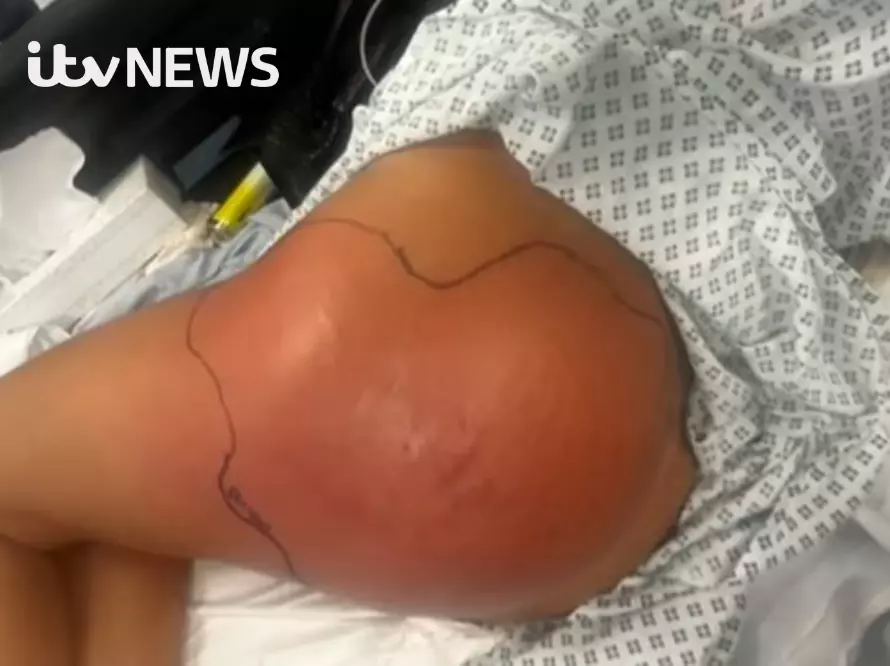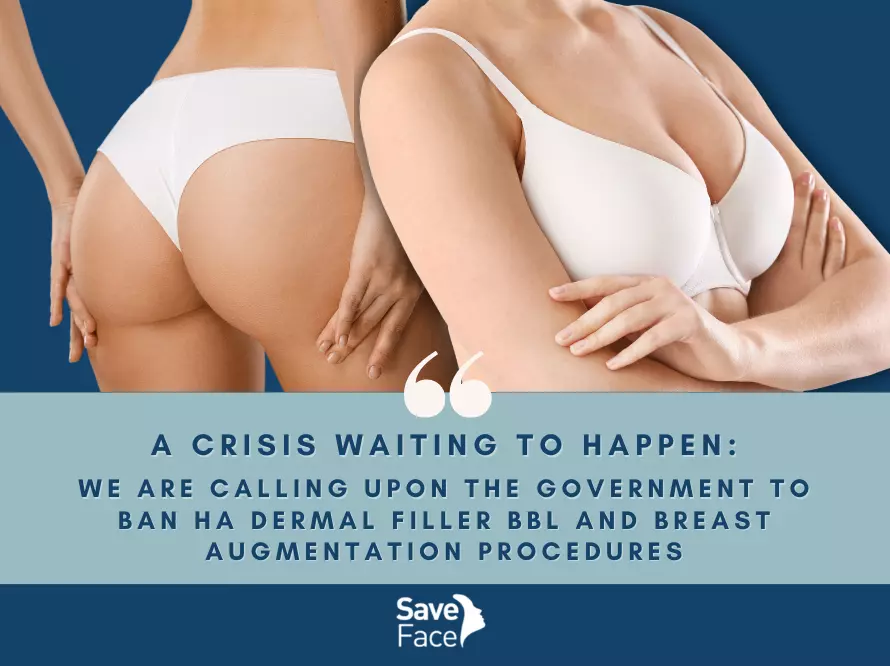Non-surgical beauty procedures are becoming increasingly popular – and creating an unregulated industry that risks lives as a result. Harriet Symonds reports on the new medical ‘wild west’
“Her buttocks were really red, inflamed, going purple. The practitioner said: ‘Just a bit of bruising, go to sleep and you’ll be fine’… She was in septic shock.”
Ashton Collins, director of Save Face, a government-approved register for medical aesthetic treatments, is telling The House about a woman’s botched Brazilian butt lift. The non-surgical procedure, known as a BBL, involves dermal filler or fat being injected into the buttocks to add volume and definition.
Collins continues: “She was rushed to hospital and, upon arrival, went into cardiac arrest and had a heart attack. Her kidneys failed, her family were called in to say goodbye… She got placed in an induced coma.”
She survived. “The impact is lifelong,” warns Collins. “She’s going to have health problems for the rest of her life.”
From burst lips and frozen foreheads to nerve damage, infection and blindness, non-surgical procedures can have terrifying side effects when they go wrong. These treatments – or ‘tweakments’ – are booming in popularity, but with so little regulation, how can we trust they’re safe?
In the United Kingdom there are currently no legal training requirements for beauty therapists and aesthetic practitioners injecting Botox or other brands of botulinum toxin, or dermal fillers.
“It’s a bit like the wild west; anybody can do anything to anyone,” says Caroline Nokes, Conservative MP for Romsey and Southampton North, and chair of the Women and Equalities Committee.
Social media in particular has become a hotbed of “cowboy practitioners” who disappear when procedures go wrong. There is often no way to find the practitioner if help is needed; and no way of holding them accountable for problems.
“They don’t have to be trained at all; don’t have to be insured,” explains Collins. “They can set themselves up as an aesthetic practitioner tomorrow and buy cheap products on the internet. And for the user, when something goes wrong, they have zero avenues for redress.”
Last year, Save Face received reports from more than 3,000 people of complications or unwanted outcomes from cosmetic procedures. Forty-eight per cent of the complaints were from girls between 18 and 25 years old.
Dr Luke Evans, Conservative MP for Bosworth and a qualified GP, is also raising concerns: “Particularly with fillers, there’s no easy way of fixing it… A lot of the stuff that’s being used is unlicensed as well. It’s not even the right stuff going into your face.”
Ill-qualified practitioners often buy counterfeit products online because it’s cheaper than going through a prescriber. But with so many unknown ingredients in these fake injectables, it’s no wonder they often go wrong.
Evans adds: “I’ve certainly had patients in my time who’ve had lip fillers [that have] exploded. It’s been the NHS that’s had to sort it out, and that’s tough because there’s a question mark over who should deal with that.”
Shockingly, there is no data on how much money botched cosmetic procedures cost the NHS, but from the sheer scale of people reporting complications it’s not hard to imagine it will carry a hefty price tag.
It’s doubtful that these untrained practitioners have enough, if any, knowledge of the anatomy of the face.
“There’s an awful lot more to Botox and filler than just pumping people’s faces full of toxins,” Nokes tells The House.
She adds: “The stark reality is we all know that it’s being performed in hairdressers and nail bars up and down the country.” In fact, cosmetic procedures are now seen as comparable to getting a new haircut, fake eyelashes or a fresh manicure – you can even pop into a nearby salon for a top up of filler or Botox during your lunch break.
What started out as low-key procedures to enhance natural features and prevent ageing has now snowballed into hugely complex surgical alternatives with potentially life-threatening consequences.
Since 2022, Save Face has received more than 300 reports of people who experienced disastrous near-death experiences from BBL and breast augmentation procedures, carried out using huge quantities of dermal filler.
Crucially, 99 per cent of medically trained professionals refuse to offer this procedure because it is too dangerous.
“You’ve got laypeople who are self-taught and been on a half-day course, willing to offer this treatment,” says Collins.
Unqualified practitioners failing to take their patients’ concerns seriously further compounds the danger. Incredibly, 98 per cent of complications were misdiagnosed by the practitioner as swelling or bruising, and 82 per cent of patients were blocked or ignored by their practitioner after complaining.
Save Face is lobbying the government to ban the procedure entirely. Collins adds:
“It will literally be a matter of time before somebody dies, it worries me greatly.”
These are quite intrusive procedures that nobody should undertake lightly
But the pressure to look perfect has never been higher. The rise of social media and reality TV shows like The Kardashians and Love Island means we are now bombarded daily with glitzy celebrities and influencers showing off their picture-perfect bodies and immaculate faces.
“I think it’s really sad the societal pressures that young women are put under, particularly when it comes to things like lips,” says Nokes. In 2015, when media personality Kylie Jenner revealed she’d used filler to create her bigger pout, the procedure went viral and cosmetic clinics across the UK were inundated with inquiries.
Nokes adds: “These are quite intrusive procedures that nobody should undertake lightly and they’ve become, in many instances, a fashion statement as opposed to being for any sort of real purpose.”
Former health minister Nadine Dorries agrees: “The problem with Celebrity Big Brother and programmes with people who’ve got pumped-up faces, looking totally unnatural, is that it puts pressure on the young and sets [unrealistic] role models for what you should look like.
“When I watched The Apprentice a few months ago, I was horrified at the distorted faces of the contestants. I don’t know why they thought their lips looked attractive – they looked grotesque!” Dorries adds.
According to the 2023 Girlguiding attitudes survey, almost two in five girls aged between 11 and 21 feel bad about how they look after seeing images online where people are edited to look perfect.
“I think that’s actually getting worse,” says Evans.
Negative body image is pushing young girls to turn to cosmetic procedures as a cheap and easy solution with immediate results.
“The problem is people looking for quick fixes for something that didn’t need to be fixed in the first place,” he adds. “They are trying to fit to a narrative they can’t get, either from a photo or an image they’ve concocted in their head.”
In 2021, the Botulinum Toxin and Cosmetic Fillers (Children) Act criminalised Botox and filler injections for under-18s in England.
“I’ll be honest, I wanted to go further, but there was just no desire,” explains Dorries. “The one thing the Conservative Party doesn’t like is over-regulation.”
Although there was huge support to ban cosmetic procedures for under-18s, there is little support for increasing the age limit any further. Nokes explains: “The stark reality is, at 18, you are an adult so I don’t think we should be raising it to 21.” But adds: “That doesn’t mean we should be supporting it.”
In many ways raising the minimum age could exacerbate the problem. “Taking it further may have its own challenges because if you’ve been considering lip fillers for a long time, and it’s causing you a lot of emotional distress and you feel that your life would be enhanced by it, there are merits to that,” says Collins.
As Evans points out: “A lot of people do want to see more regulation – the good providers know that there’s a risk here. The flip side is there’s a big tourism industry in this.”
Children under 18 in England are already travelling to Wales or Scotland for cosmetic procedures where there are currently no minimum age requirements. Increasing the minimum age in England would likely encourage more young girls to travel abroad to Turkey or elsewhere to access even cheaper and potentially far more dangerous procedures.
“I don’t think you can legislate to stop people looking how they want to look… and I think that’s half the problem,” says Dorries.
Perhaps the most obvious regulatory route that holds relatively widespread support is cracking down on rogue practitioners by mandating stricter training levels and legislating to ensure patients are properly consulted before the treatment.
“I do think there are ways of doing things like registers, training levels, minimum standards, that could all make a big difference,” says Evans.
“Accountability is key, so the practitioner who’s doing it has a duty of care. That is fundamental, so you can absolutely trust that the person knows exactly what they’re doing,” he adds.
Dorries, a frequent Botox user herself, agrees: “I am no stranger to Botox. I love a bit of Botox. But I get mine done by someone who’s a qualified GP. There’s no way on Earth I’d go and let anybody do it who’s anything less than medically trained.”
She adds: “Being a registered general nurse… who understands the risks of cross-infection is the minimum qualification you should have.”
But Nokes warns against regulating too far. “I’m really reluctant to go down the route of saying that this is something that should only be done by doctors.”
Developing a system that regulates cosmetic procedures properly and receives widespread support is incredibly complex.
“When I was health minister I tried, and it is a minefield,” says Dorries.
The Health and Care Act (2022) introduced powers to bring into force a national licensing scheme for non-surgical cosmetic procedures in England. The first consultation took place last year, but with the expected completion date some time in 2025 for just the licensing scheme, we’re still a long way off from seeing tighter restrictions in place, or even knowing what they might be.






